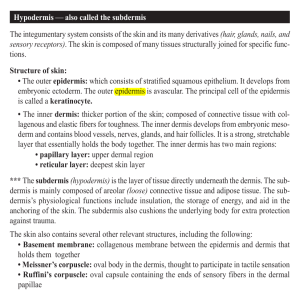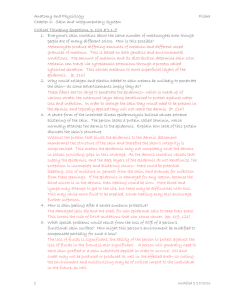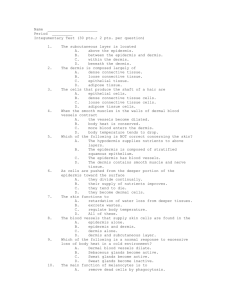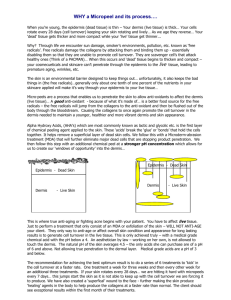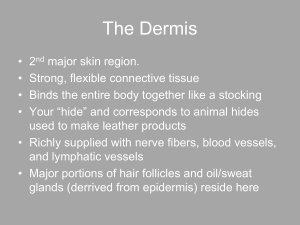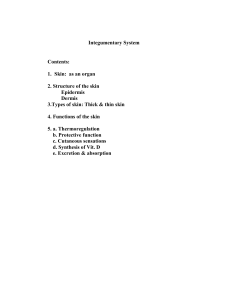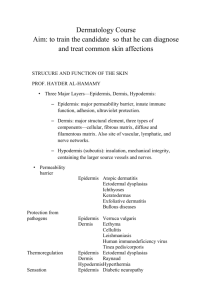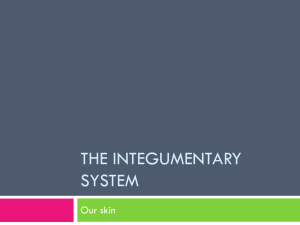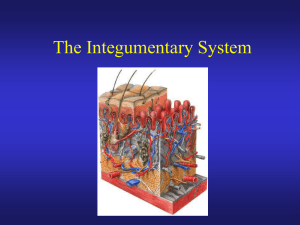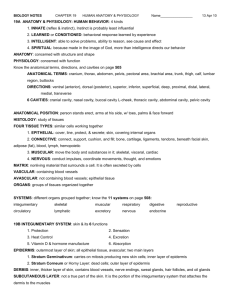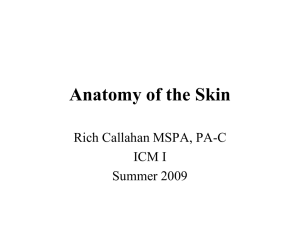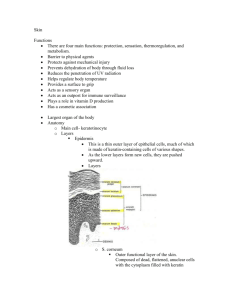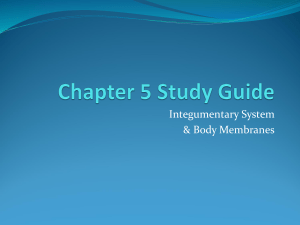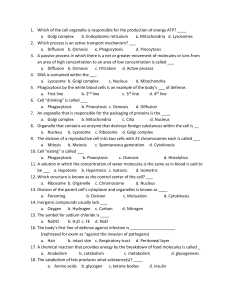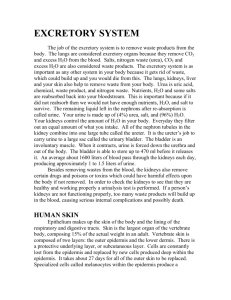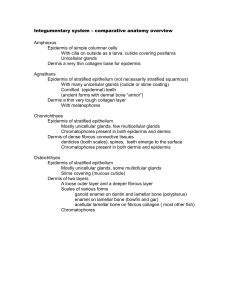Integument
advertisement
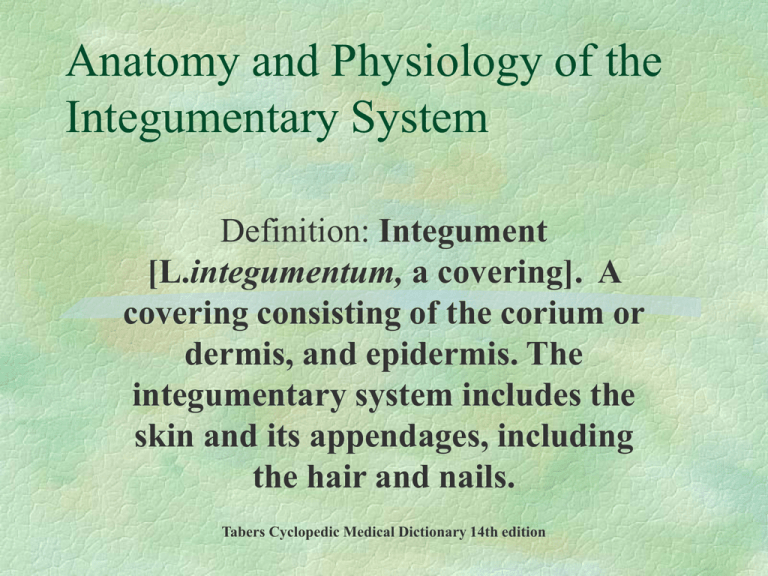
Anatomy and Physiology of the Integumentary System Definition: Integument [L.integumentum, a covering]. A covering consisting of the corium or dermis, and epidermis. The integumentary system includes the skin and its appendages, including the hair and nails. Tabers Cyclopedic Medical Dictionary 14th edition Integument Epidermal layers Epidermal-dermal junction: also known as the basement membrane. At this junction there is an exchange of cells and fluid between the dermis and epidermis. The epidermis normally does not contain blood vessels or nerves. The skin usually ranges from 1 1/2 to 4 mm. thick and the epidermis makes up about 1/10 of a millimeter. However the keratin layer can increase to about 1 mm on the palms and soles. The epidermis and dermis are bound together by a series of projections that grow up (dermal papillae) and down (rete ridges), which interface with each other. Dermis: There are two layers - the papillary and reticular layers. The dermis underlies the epidermis and consists of a mucopolysaccharide matrix in which collagenic and reticular fibers are found. The dermis contains the blood vessels and nerves as well as the nutrient supply to the deeper living layers of the epidermis. The blood vessels here play an important role in the regulation of body temperature. The nerve fibers are scattered throughout the dermis. Some of them (motor fibers) carry impulses to dermal muscles and glands, causing these structures to react. Others (sensory fibers) carry impulses away from specialized sensory receptors located within the dermis. One set of dermal receptors (Pacinian corpuscles) is stimulated by heavy pressure, while another set (Meissner’s corpuscles) is sensitive to light touch. Still other receptors are stimulated by temperature changes or factors that can damage tissues. Oil and sweat glands Hair Structure Nail Structure Anatomical Structures Not Part of the Integumentary System Fascia: Shiny or dull, usually white fibrous tissue. This is a firm tissue that separates tissue planes. Muscle is usually just underneath the fascia. Infection can spread along fascial planes - necrotizing fasciitis. Muscle: Dull or beefy red in color. Highly vascular - has blood vessel supply. Fibers can tear. Tendons are usually connected to muscle with bone underneath. Tendon: Elastic fibers, white in color, may be shiny. Often times covered with a layer of thin tissue- paratenon. This is the vascular layer of tendon. Otherwise, tendons are not very vascular. Tendon attaches muscle to bone. Can cross over joints. Bone: Hard, bright white. May however be yellowish in color depending on if it has been exposed to air and the presence of necrotic or infected tissue. The outer layer of bone is called the periosteum. Joints: Cartilage is present which is a gleaming, shiny white material in healthy joints. Joint spaces are enveloped in joint capsule which is a thin, fibrous material. Once entered, there is synovial fluid which is typically a slightly viscous, almost straw colored fluid. Cartilage is not vascular and has no innervations. Blood Vessels: Tubular shaped structures which contain blood and provide nutrients for adjacent tissues as well as return blood to the heart and lungs. May or may not be pulsatile. Connective tissue that cushions articular surfaces of bone. Typically clean, white and shiny. Poor vascularity.

